Keywords
M2M
An abbreviation for Machine2Machine.
In M2M systems, machines communicate with each other without human intervention.
Cellular applications targeting human often demand high-speed communication,
but this is not the case for M2M applications.
LPWA
LPWA stands for Low Power Wide Area.
It is a general term referring to next-generation communication system covering wide area by low power.
Many IoT applications were unprofitable based on cellular networks,
but the spread of LPWA is hoped to make such applications profitable.
LoRaWAN
LoRa has been around few years as a physical layer of RF,
and now LoRaWAN came up as a MAC protocol over LoRa.
GREEN HOUSE LoRa module has LoRaWAN protocol stack implemented inside the module,
so it can connect to LoRaWAN network by the module alone.
|
Introduction
Cellular networks have covered the whole world,
but now, new M2M networks featuring low-speed, low-price and low-power is starting to spread.
These M2M networks are called LPWA,
and LoRaWAN is a growing power among other LPWA technologies.
GREEN HOUSE, with its wireless technologies and rich IoT business experience,
will focus on growing LoRaWAN.
We will contribute on spreading LoRaWAN network in Japan with various partners.
■LPWA against conventional wireless networks
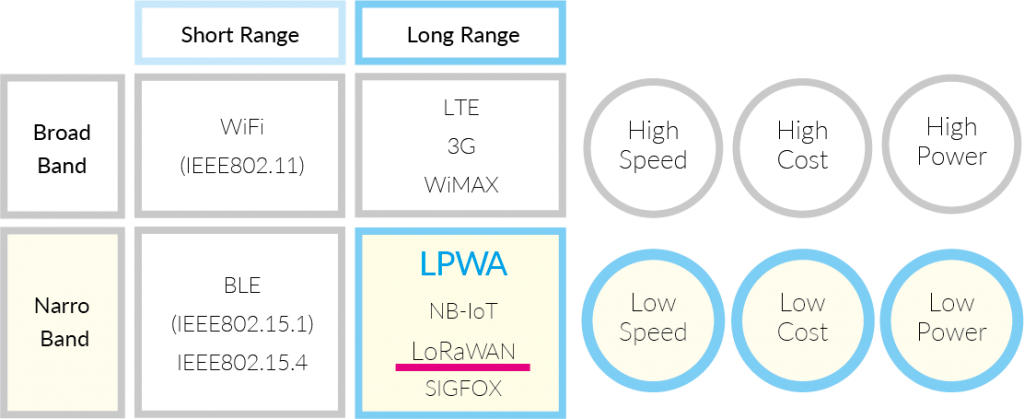
■LoRaWAN and SIGFOX
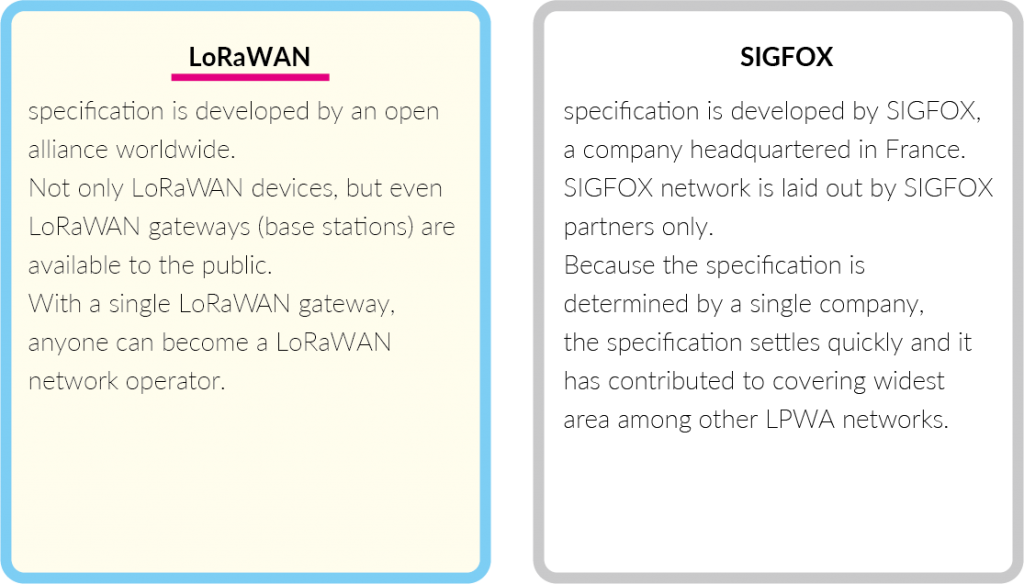
The purpose of experiment
If low-speed, low-price, and low-power LoRaWAN services spread,
we can expect various IoT applications becoming real.
Some examples are: smart meters for water and electricity,
watching flood conditions at sewers and roads from torrential rain,
and locating and rescuing by drones.
Various IoT applications may be built on LoRaWAN and bring convenience to our lives.
In this experiment, we built a minimum LoRaWAN network using a single gateway, and we tested its coverage.
See how easy it is to extend LoRaWAN network, and imagine what you can do with it.

|
| The network environment for experiment |
Field Experiment
The experiment was carried out on December 2016.
We used our own LoRaWAN device and set up the LoRaWAN gateway on top of our office building at Ebisu, Shibuya-ku Tokyo.
It was one of the first LoRaWAN coverage experiment to be carried out in Tokyo.
The experiment is a starting point for us to exploit LoRaWAN in various fields.
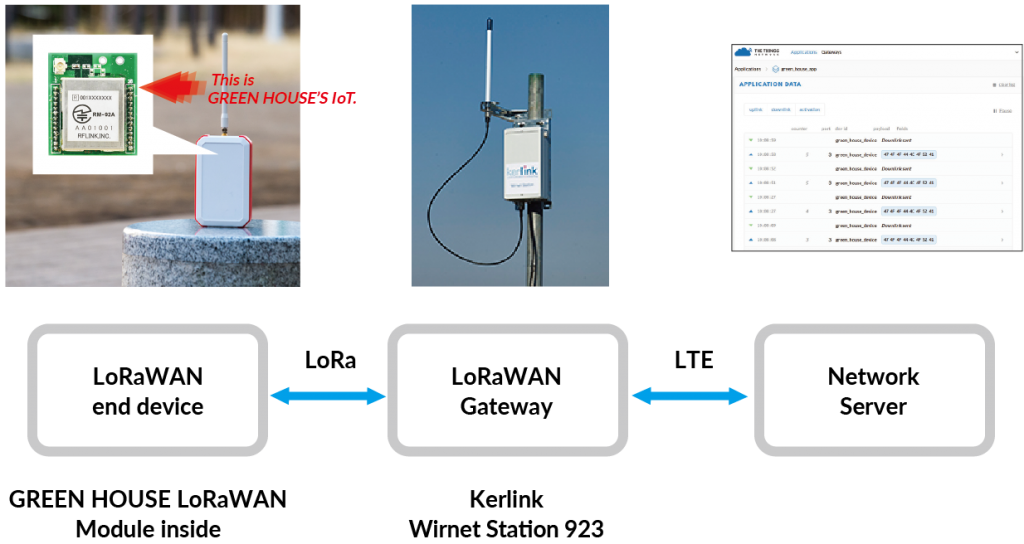
|
| Gateway |
LoRaWAN gateway by Kerlink is used in commercial LoRaWAN networks around the world.
The gateway used in this experiment is TELEC certified and complies with Japanese radio law.
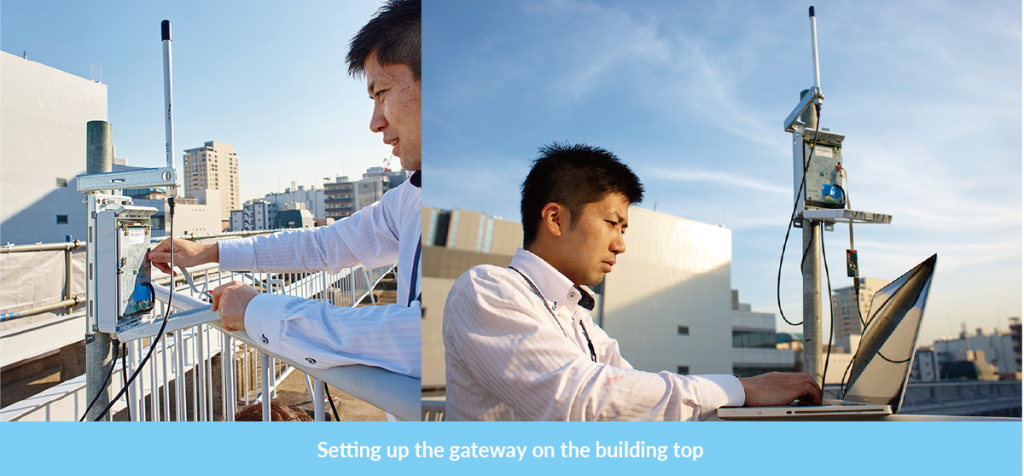
|
| LoRaWAN end device |
As for the LoRaWAN end device, we will be using a test node with our LoRaWAN module inside.
Our LoRaWAN module can operate without an external MCU, running the application on itself.
Therefore, we can make the test node as simple as below.
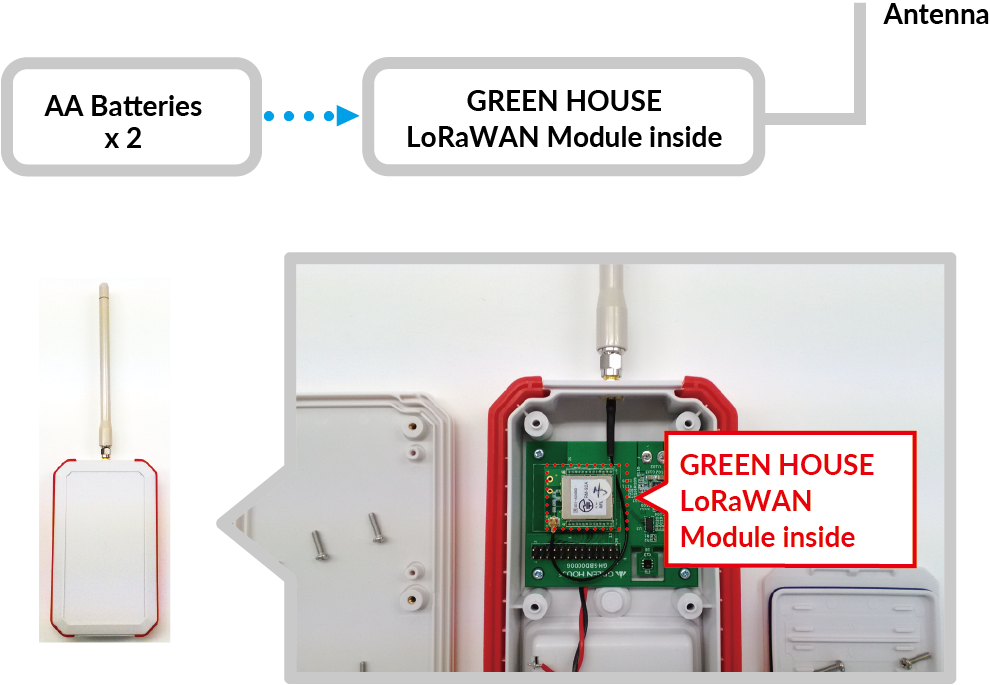
The purpose of this field experiment is testing the network coverage only,
so the test node will simply send out a counter every 30 seconds.
The counter skips on a packet loss, from which we can detect an unstable communication.
|
| Server |
The RF communication itself will be done netween the node and gateway,
but the network server is responsible for all network control in LoRaWAN.
When gateway receives the RF signal from end node, it detects the signal strength.
The detected signal strength is transferred to the network server along with the data,
so we can see the signal strength on the server console and know the communication stability.
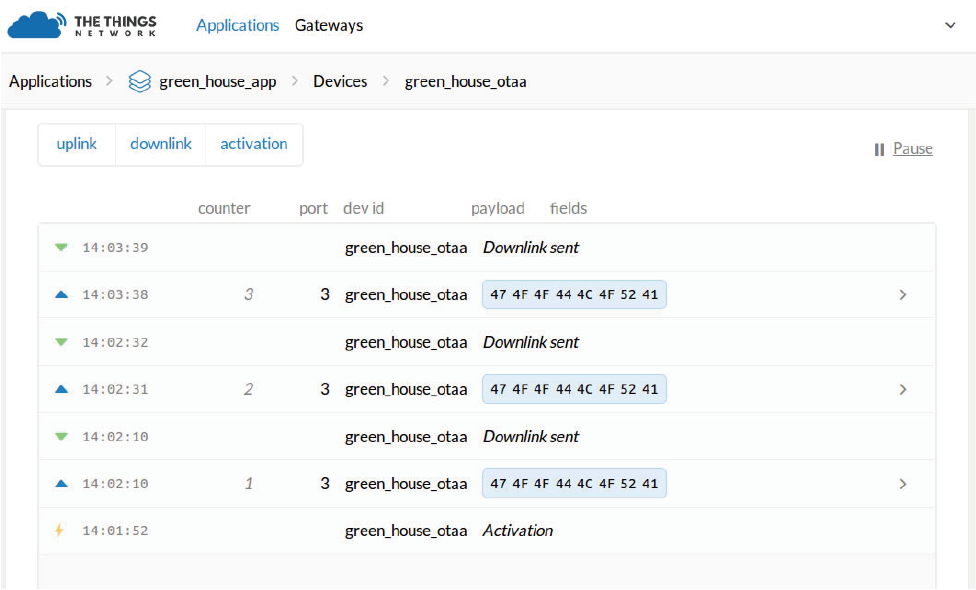
Communication log between GREEN HOUSE device and TheThingsNetwork server, a free LoRaWAN service.
|
Testing network coverage by field experiment
How it’s done |
We will walk around the area with our device,
while constantly accessing the network server console by smartphone to check the communication stability.
We will walk around and plot the spots where we were able to communicate stably.
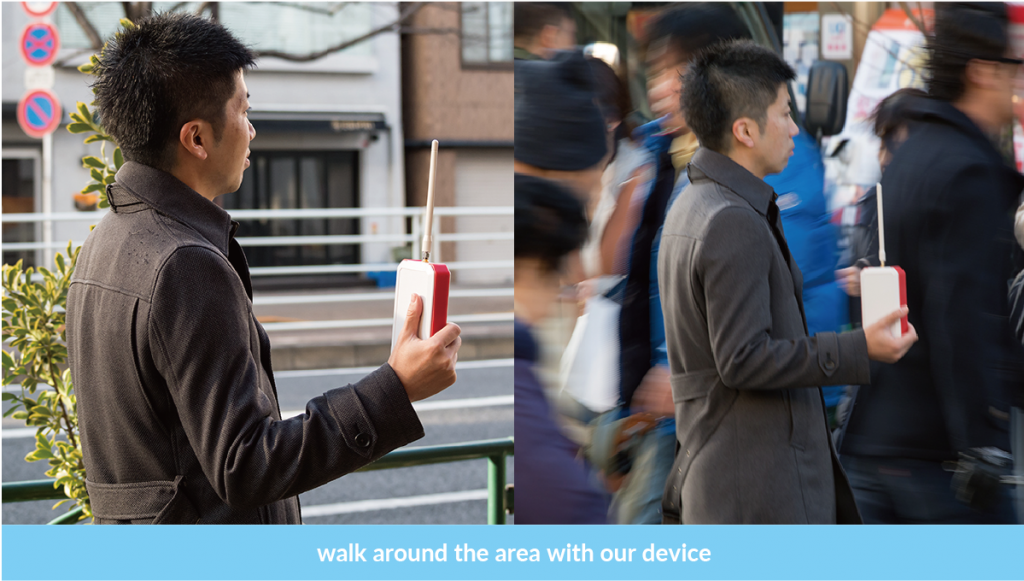
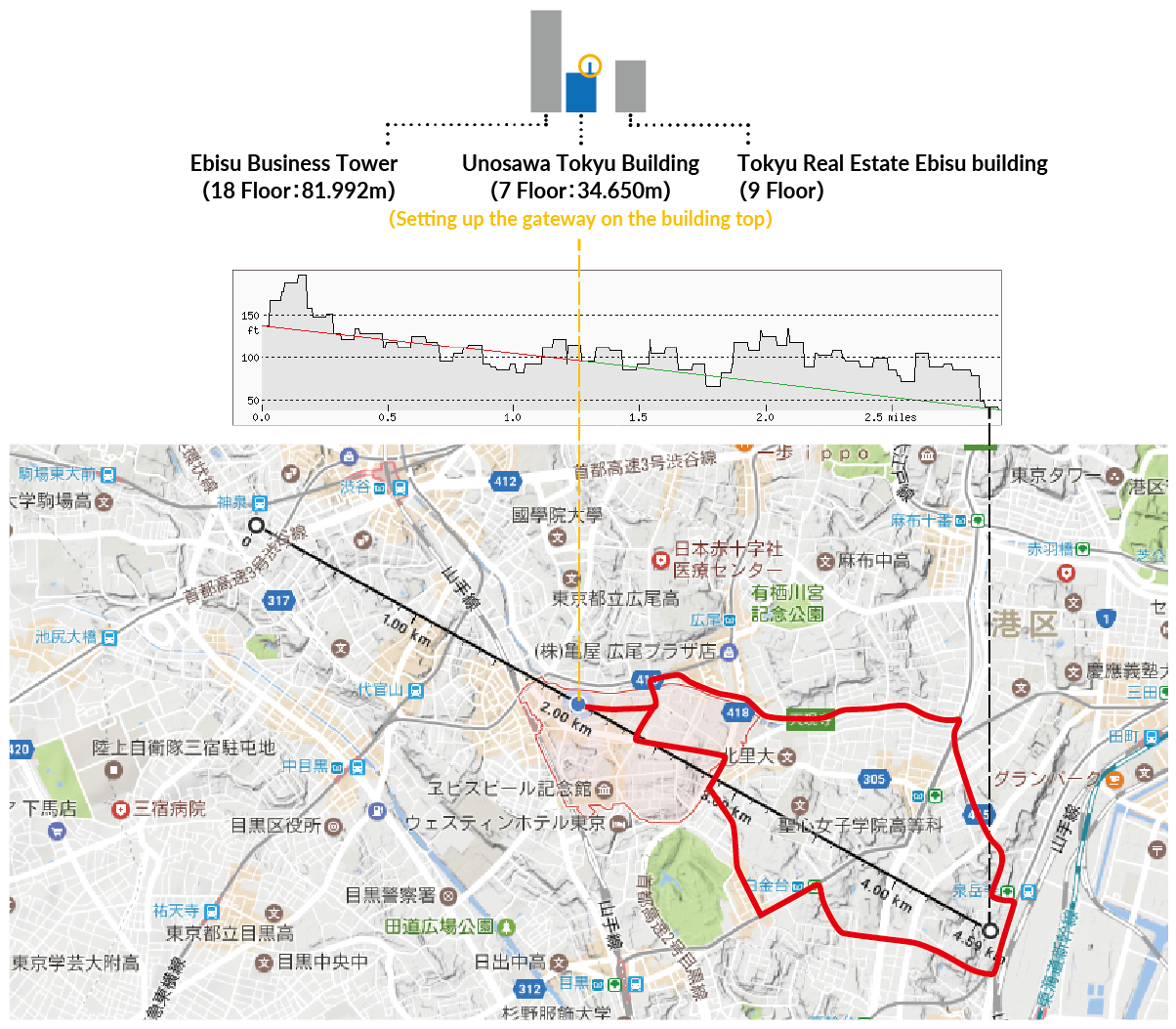
We started our walk from Ebisu, moved east along the Meiji Street and then headed south to Sengakuji.
Observing the landscape around gateway,
Sengakuji is about 15m lower than Ebisu where the gateway is located.
Shiroganedai in between them is positioned high, which blocks the sight.
We set up the gateway on the top of the building, because the height is very important factor for RF communication.
In addition to the landscape,
our Unosawa Tokyu Building (34.65m) is being sandwiched between two higher buildings that makes the communication environment poor.
Tokyu Fudousan Ebisu Building (43.87m) is standing in Sengakuji direction,
so LoRaWAN signals must wrap around these buildings to reach the gateway.
|
The result of field experiment
|
We marked the stably communicated spots on the map to show the network coverage.
The red circle shows the gateway location, and the blue flags indicate stable communication.
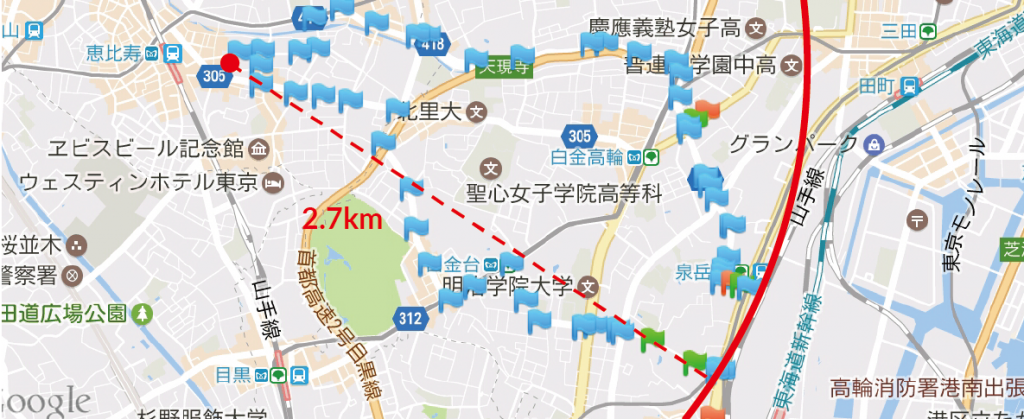
We can see that placing the gateway at Ebisu extends the network coverage to roughly Sengakuji.
The distance to Sengakuji is 2.7km,
therefore a single gateway may cover approximately 23km^2, if the area is a perfect circle.
For example, the area surrounded by Yamanote-sen railway is 63km^2,
so few gateways are sufficient for covering the whole area.
Obviously, the RF communication is strongly affected by the landscape,
so we can’t simply conclude the single gateway coverage is 2.7km around it.
We set the gateway on top of 7 story building this time, but there were higher buildings around us.
We can say that there is a room for improvement if we can set the gateway at a better location.
The height and open sight can bring incredible improvement to the RF communication distance.
We GREEN HOUSE will further research and build LoRaWAN network for continued operation.
|
| Summary |
Findings and challenges
Even in urban areas with many high buildings, a single LoRaWAN gateway coverage extends 2.7km around it,
from Ebisu to Shibuya, Gaienmae, Gotanda and Roppongi.
We must continue to research and optimize the gateway location for greater area coverage,
because RF communications are strogly affected by landscapes.
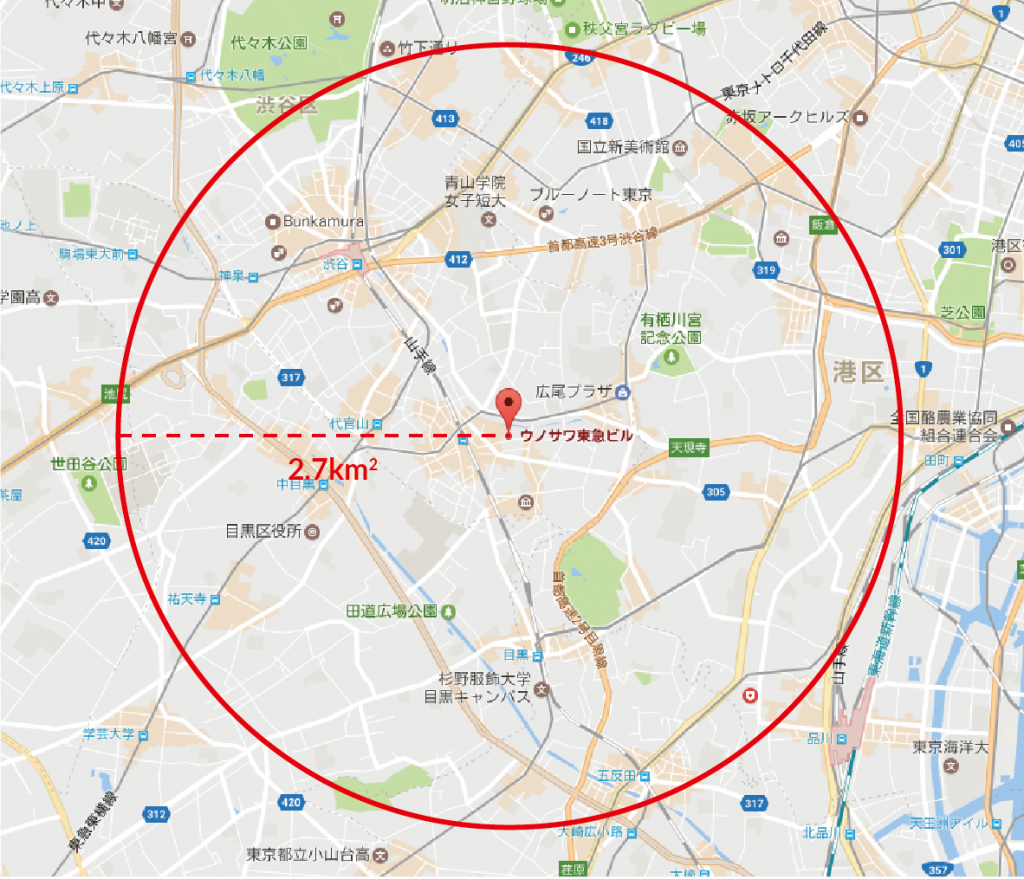
|












